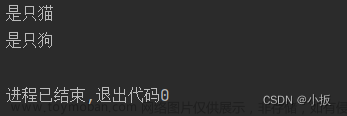package com.test.servlet;
import java.io.IOException;
import java.util.ArrayList;
import java.util.List;
import javax.servlet.ServletException;
import javax.servlet.annotation.WebServlet;
import javax.servlet.http.HttpServlet;
import javax.servlet.http.HttpServletRequest;
import javax.servlet.http.HttpServletResponse;
import javax.servlet.http.HttpSession;
import com.test.pojo.Student;
/**
* Servlet implementation class TestElServlet
*/
@WebServlet("/TestElServlet")
public class TestElServlet extends HttpServlet {
private static final long serialVersionUID = 1L;
/**
* @see HttpServlet#HttpServlet()
*/
public TestElServlet() {
super();
// TODO Auto-generated constructor stub
}
/**
* @see HttpServlet#doGet(HttpServletRequest request, HttpServletResponse response)
*/
protected void doGet(HttpServletRequest request, HttpServletResponse response) throws ServletException, IOException {
// TODO Auto-generated method stub
//response.getWriter().append("Served at: ").append(request.getContextPath());
request.setAttribute("uname", "daimenglaoshi");
HttpSession session=request.getSession();
session.setAttribute("uname", "daimenglaoshi2");
Student student=new Student();
student.setSid(1);
student.setSname("aa");
student.setMajor("english");
student.setStu_class("0101");
request.setAttribute("mystudent", student);
List<Student> list=new ArrayList<Student>();
list.add(student);
Student student2=new Student();
student2.setSid(2);
student2.setSname("bb");
student2.setMajor("english");
student2.setStu_class("0101");
list.add(student2);
request.setAttribute("mylist", list);
request.getRequestDispatcher("index.jsp").forward(request, response);
}
/**
* @see HttpServlet#doPost(HttpServletRequest request, HttpServletResponse response)
*/
protected void doPost(HttpServletRequest request, HttpServletResponse response) throws ServletException, IOException {
// TODO Auto-generated method stub
doGet(request, response);
}
}
<%@ page language="java" contentType="text/html; charset=UTF-8"
pageEncoding="UTF-8"%>
<!DOCTYPE html PUBLIC "-//W3C//DTD HTML 4.01 Transitional//EN" "http://www.w3.org/TR/html4/loose.dtd">
<html>
<head>
<meta http-equiv="Content-Type" content="text/html; charset=UTF-8">
<title>Insert title here</title>
</head>
<body>
${uname}<br/>
${sessionScope.uname}<br/>
${mystudent.sid}<br/>
${mystudent.sname}<br/>
${mylist[1].sid}<br/>
${param.id}
</body>
</html>
<%@ page language="java" contentType="text/html; charset=UTF-8"
pageEncoding="UTF-8"%>
<!DOCTYPE html PUBLIC "-//W3C//DTD HTML 4.01 Transitional//EN" "http://www.w3.org/TR/html4/loose.dtd">
<html>
<head>
<meta http-equiv="Content-Type" content="text/html; charset=UTF-8">
<title>Insert title here</title>
</head>
<body>
<a href="index.jsp?id=1">传参</a>
</body>
</html>
EL一共11个内置对象,无需创建即可以使用。这11个内置对象中有10个是Map类型的,最后一个是pageContext对象。
pageScope
requestScope
sessionScope
applicationScope
param;
paramValues;
header;
headerValues;
initParam;
cookie;
pageContext;文章来源:https://www.toymoban.com/news/detail-577224.html
域内置对象一共有四个:文章来源地址https://www.toymoban.com/news/detail-577224.html
pageScope:${pageScope.name}等同与pageContext.getAttribute(“name”);
requestScope:${requestScope.name}等同与request.getAttribute(“name”);
sessionScoep: ${sessionScope.name}等同与session.getAttribute(“name”);
applicationScope:${applicationScope.name}等同与application.getAttribute(“name”);
到了这里,关于javaee el表达式的文章就介绍完了。如果您还想了解更多内容,请在右上角搜索TOY模板网以前的文章或继续浏览下面的相关文章,希望大家以后多多支持TOY模板网!










